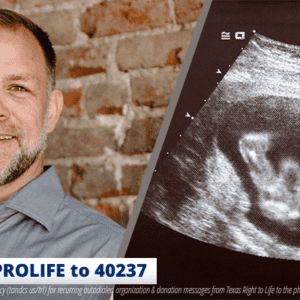Abortion advocates try to normalize late-term abortion
If you tune into PBS today for some wholesome family entertainment — that you as a taxpayer helped to fund- then you might be surprised to find that a documentary glorifying the murder of fully-developed babies is on the air. The late-term abortion documentary After Tiller has weaseled its way onto the air waves of publicly-funded PBS, and if you tune in, this is what you’ll be told:
-
That late abortionist George Tiller, notorious for killing both healthy and sick children up to the point of their due dates, was a hero and martyr for his cause.
-
That the four abortionists who openly commit late-term abortions today are saviors for women in crisis.
-
That late-term abortions are sometimes the best thing for mothers, whether or not their children suffer from fetal anomalies.
-
That the attitudes of peaceful Pro-Lifers breed the insane individuals who blow up abortion mills and shoot abortionists.
In other words, you’ll witness how your tax money is used to lie to you, to your family, and to the entire nation about the reality of the gruesome late-term abortion procedure.
The documentary, designed to capture the late-term abortion climate in the US since the death of Tiller five years ago, is hailed by abortion advocates as an "important film that looks unblinkingly at an important subject." However, the film’s angle is anything but "unblinking." In fact, it sanitizes the issue to such a degree that the actual late-term abortion procedure is nowhere to be seen. Instead, the documentary focuses on the perspectives of the four abortionists themselves, with plenty of anecdotal stories, and includes clips of distraught parents explaining why they have been led to believe that late-term abortion is the best decision for their baby.
The film’s failure to provide a balanced perspective of the issue (i.e., in failing to discuss the fact that not all late-term abortion decisions are based on extraordinary circumstances like fetal anomaly or rape, and the fact that all of the children aborted by these four abortionists can feel pain) testifies to its singular objective, which is to sanitize the late-term issue beyond recognition. Much like Wendy Davis did during her 11-hour filibuster diatribe about late-term abortion that, incidentally, included no mention of the late-term abortion procedure or victim itself.
Shelly Sella, one of the four abortionists spotlighted in the documentary, worked with George Tiller before his death. Sella very candidly admits that she is fully understands what she is doing when she commits a third-trimester abortion. She explains that she struggles with her profession because she knows she kills babies.
The woman delivers a baby, and it’s a stillborn. And that’s hard to deal with. I think the reason I’ve struggled is because I think of them as babies. I don’t think of that as a fetus. To me, I think of that [term “fetus”] as a way to distance myself from what I do. I mean it’s one thing when it’s a first trimester abortion and what you see is a little bit of tissue. But if you go all the way to the other extreme, you can’t say that’s some tissue. That’s not tissue. It’s a baby. Then you have to think about it. It’s like, what are you doing? And why are you doing it?
Late-term abortions are exponentially more expensive than earlier abortions. They cost upwards of $10,000 (as one clinic employee quotes to a perspective client in the documentary). Considering the fact that there are only four abortionists committing all of these very late abortions in the country, there is a handsome profit to be made off of the backs of third-trimester babies.
Sella contends that unless someone knows what is going on for the mother, they can’t understand these late-term abortions. It [late-term abortion] sounds barbaric, doesn’t it?, she asks. Yet, in spite of the difficulties some mothers face in carrying their children to term, thousands of mothers report regretting their abortions.
Leroy Carhart’s experience of being “targeted” by Pro-Life advocates receives disproportionate attention from the film, given the lack of explanation for this opposition. City councils, Operation Rescue, and local residents wherever Carhart sets up shop all work against his presence in their communities. Opponents are characterized in the documentary as malicious, when in reality Carhart is dangerous to both women and children. He is hands-down one of the shoddiest abortionists in American history. After Tiller, of course, fails to mention this fact.
There is a constant stream of ambulances called to transport botched abortion victims away from his facilities, and he is responsible for at least two maternal deaths following botched abortions. These include Christin Gilbert, a young woman with Down Syndrome whom he killed in 2005. He botched her 33-week abortion. Carhart also killed Jennifer Morbelli, age 29, in 2013. Jennifer was, like Christin, 33 weeks pregnant and died after Carhart abandoned her, depriving the emergency room staff who might have saved her of information about her procedure that might have ultimately saved her life.
The film contends that late-term abortion is an emotional, difficult, and complicated issue. The documentary is an emotional appeal to the 86% of Americans who do not believe that third-trimester abortion should be legal.
Tags: abortion, entertainment, lateterm abortion, pbs



